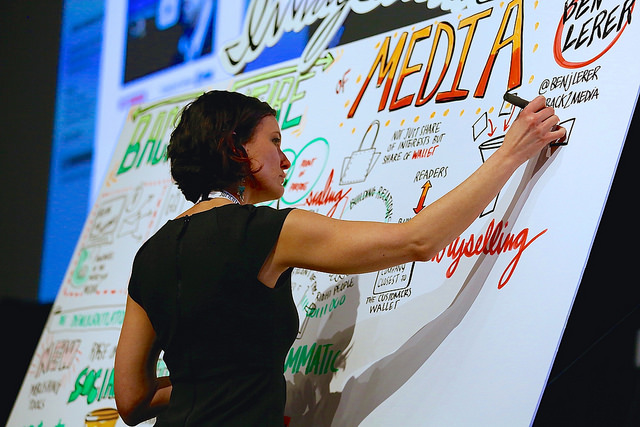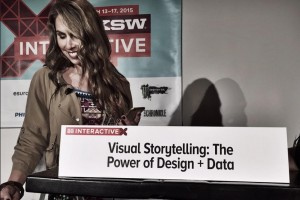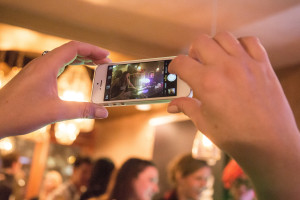Four Ways to Make Your Brain More Vibrant by Using Visuals
Researchers are finding that there are crucial benefits to be found at work by activating the portion of your brain involved in creating anything visual. So if you fight the urge to cover your meeting agenda’s in ink, stop resisting and pick up a pen: some of the world’s greatest leaders were (or are) known doodlers, including Dwight Eisenhower, Ronald Reagan, Bill Gates and Barack Obama. While we’re not saying that scribbling is a path to the White House, read on for more info about the astonishing science showing how drawing and sketching your ideas – even if your professional area is unrelated to the arts – can help you in the workplace.
Here are four solid suggestions that to help you get started:
Doodle, and Your Brain Reaps the Rewards
Lesson one: imitate the leaders of the free world and start doodling at work.
Here’s the proof: in a study, forty volunteers listened to a two-minute phone message. Half the group doodled while listening. Afterwards, the doodlers recalled 29% more of the message than their non-doodling counterparts. Think about that: up to one-third more information was remembered! Remember, your scribbles don’t have to be pretty or artistic; the point is to activate more of your brainpower.
Scientists believe this happens because visual thinking and drawing use a higher level of cognitive function. It is not just the right hemisphere that is activated, but also the pre-frontal cortex. Studies of aphasic patients (those with speech disturbances due to trauma or illness) indicate that drawing activates the same region as language and memory.
The correlation between drawing and memory may explain why high-school students who studied arts for four years scored higher on the SATs: art students ranked fifty-nine points higher on the verbal portion of the exam — and even forty-four points higher on the math portion! — than students with no coursework or experience in the arts.
Sketch Out Your Creative and Complex Ideas
Inspirational images, sketching and prototyping are key to the design process. Why is this so important? Because sketching helps “draw out” more interesting ideas. Contrary to the popular notion that creativity and visual thinking are centered only in the right hemisphere of the brain, visual thinking engages several of its different regions.
So how can visual thinking get you out of a left-brain, logical, linear-thinking rut? Visual thinking depends on a complex system of higher-level cognitive functions: when someone draws, or even thinks about a drawing, as noted, a number of brain regions are engaged, including the important pre-frontal cortex. This region is crucial for integrating information – i.e. for problem-solving and decision-making. This means that looking at pictures, using a visual model, or sketching will activate a wide array of regions of your gray matter, triggering more associations, higher-level cognitive functions, and ultimately leading to better ideas.
A tried-and-true way to get started on this path is thru the diagramming of ideas, resulting in a “mind-map” (click here to learn more about this intriguing concept). This creative way to “free-associate” ideas can lead to both creating otherwise missed connections, and organizing like ideas together, thus building a sense of logic and order. This can be particularly helpful when, for instance, you have to write an important presentation for work.
Visuals Help You Manage, Simplify, and Prioritize Better
You will find that you can simplify big, complicated projects by approaching them visually. Translating goals into visuals — and mapping out necessary steps — quickly builds a timeline that can reveal multiple layers of information such as roles, touch points, and major milestones.
Here’s how we do this at our ImageThink office in Brooklyn: we have an entire wall dedicated to our visual client engagement tracker. Each client is assigned a “magical object” that is both a magnet and a dry erase board. This gets moved along different stations of our workflow, thus telling everyone about the projects in the pipeline: i.e. if project managers are moving tasks forward, keeping up with steps like receiving contracts, and if the workload is evenly distributed between the team. Being able to collectively see all the tasks within the organization helps people see the big picture. As a team this helps us prioritize collaboration better.
Why is this so effective? Humans are visual creatures. This is reflected in the large amount of brain tissue dedicated to the analysis of images. Our brains are naturally designed to process visuals. By mapping information visually, we are using our own brainpower to our advantage.
How to Communicate and Elicit Emotions thru Drawing
Drawing and working visually don’t just help increase memory, lead to better ideas, and help us be more productive — they also have strong potential for emotional impact.
To explain this to people, I use the example of Diane Duyser, a middle-aged woman who claims to have seen the face of the Virgin Mary in her grilled cheese (truly!). Believing that it was talismanic – i.e. a good luck charm — she hung on to it for ten years. During that time she won $80,000 at a casino.
Eventually, she put the sandwich up for sale on eBay. How much did Diane’s ten-year old grilled cheese fetch ? A whopping $28,000 – perhaps evidence that she wasn’t the only person to believe they were seeing the face of a holy figure in a seemingly innocuous sandwich!
In fact, the human tendency to imagine faces in inanimate objects is so common, there is a name for it: pareidolia. It is a very impressive word for the proclivity of the human brain to see faces in, well, anything. When ImageThink leads visual thinking workshops, participants are most hesitant to try and draw people’s faces, but because of pareidolia, it is the best place to start.
In fact, a lack of skill for detail and accuracy when drawing is to your advantage: the more basic and abstract, the more universal and easy it is for all of us to project imagery onto a set of shapes. Our brains are wired for it. So the next time you need to write a message, take notes on a flip charts, or explain an idea to your coworker, go ahead and add a little cartoon. It doesn’t have to be realistic but it will definitely have impact.
All of this is to say that it can be very helpful, in the professional world, to pick up a pen, draw a smiley face, doodle, or map out your projects visually. You will remember more, see information more clearly, have more innovative ideas, and be able to depict them with more impact. You can also continue to use visuals and drawings in your everyday life, to give your brain more of a workout on a regular basis.
And if you need one last bit of scientific proof: MRIs reveal that when they draw, the brains of artists process visual information differently from non-artists. This suggests that artists have a more effective network of cognitive processing when drawing. By continuing your own efforts, you may find that a simple doodle will help build that prized “cross-cognitive transfer” in your own brain, and thus deeply enhance learning and creativity.
Written by: Nora Herting, Co-Founder, Principal of ImageThink (@imagethink)
SXSW Presentation: Picturing Your Big Ideas
TAGS: SXSW
 Interviewer Interview Prep
Interviewer Interview Prep Impactful Mentees
Impactful Mentees Benefits of a Mentor
Benefits of a Mentor Advice for First-Time Managers
Advice for First-Time Managers Overcoming the 18-month Itch
Overcoming the 18-month Itch Dressing for Your Style
Dressing for Your Style Interview Style Tips
Interview Style Tips Women's Stocking Stuffers
Women's Stocking Stuffers Gift the Busy Traveler
Gift the Busy Traveler Father’s Day Gift Guide
Father’s Day Gift Guide Airport Layover Activities
Airport Layover Activities Traveling & Eating Healthy
Traveling & Eating Healthy Travel Like a Boss Lady
Travel Like a Boss Lady The Dual California Life
The Dual California Life Gifts for Thanksgiving
Gifts for Thanksgiving Summer Reading List
Summer Reading List Top Leisurely Reads
Top Leisurely Reads New Year, New Books
New Year, New Books Life Lessons from a Sitcom
Life Lessons from a Sitcom Oprah, Amy or Amal?
Oprah, Amy or Amal?














